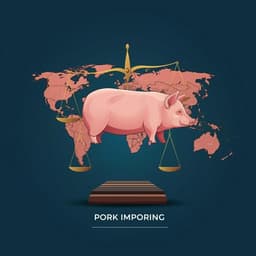
Economics
How does the self-sufficiency rate affect international price volatility transmissions in the wheat sector? Evidence from wheat-exporting countries
T. Tanaka and J. Guo
This research by Tetsuji Tanaka and Jin Guo delves into the intricate relationship between global and regional wheat prices, uncovering how self-sufficiency and substitutes like maize can buffer against price shocks. The analysis reveals critical insights into market resilience during crises like COVID-19.
~3 min • Beginner • English
Related Publications
Explore these studies to deepen your understanding of the subject.







